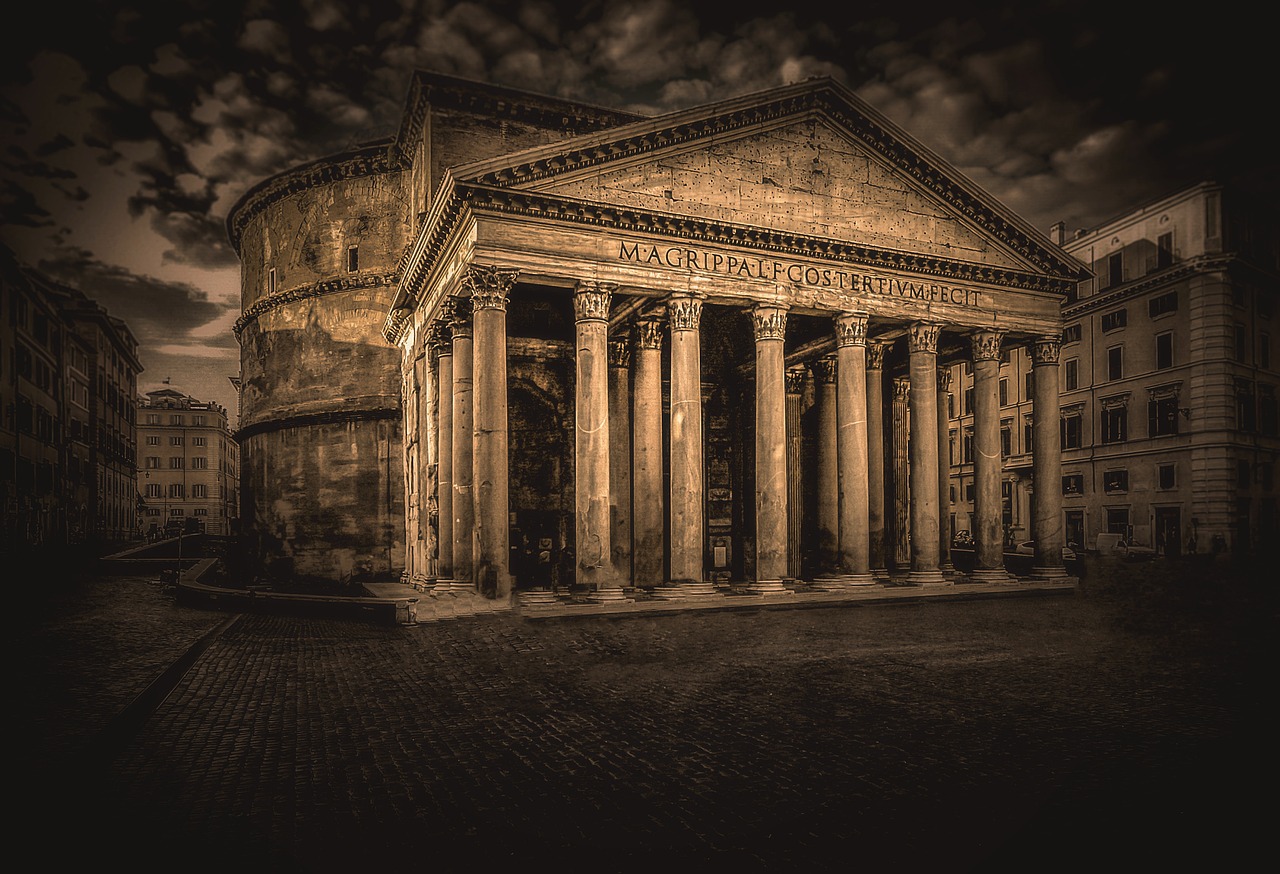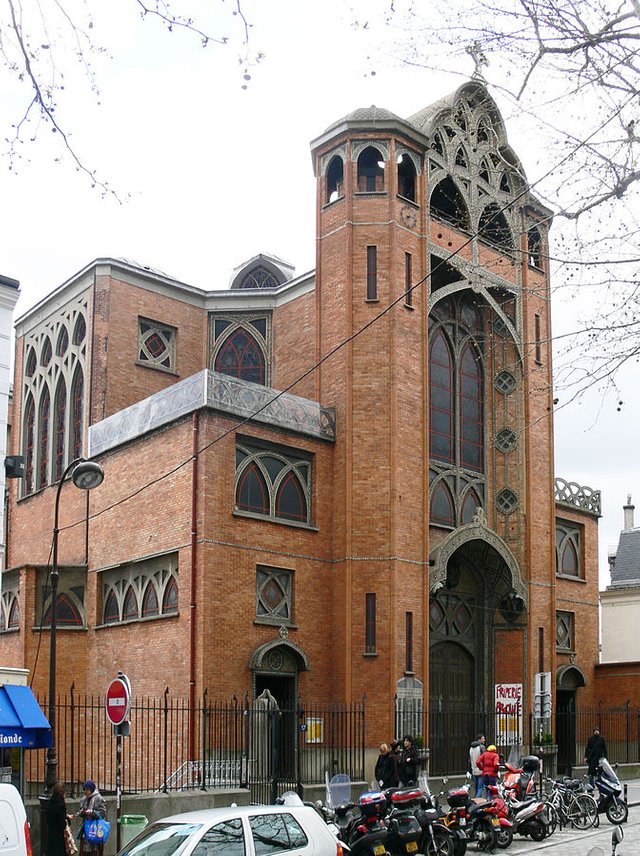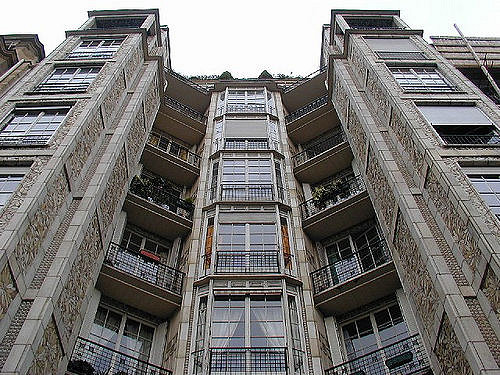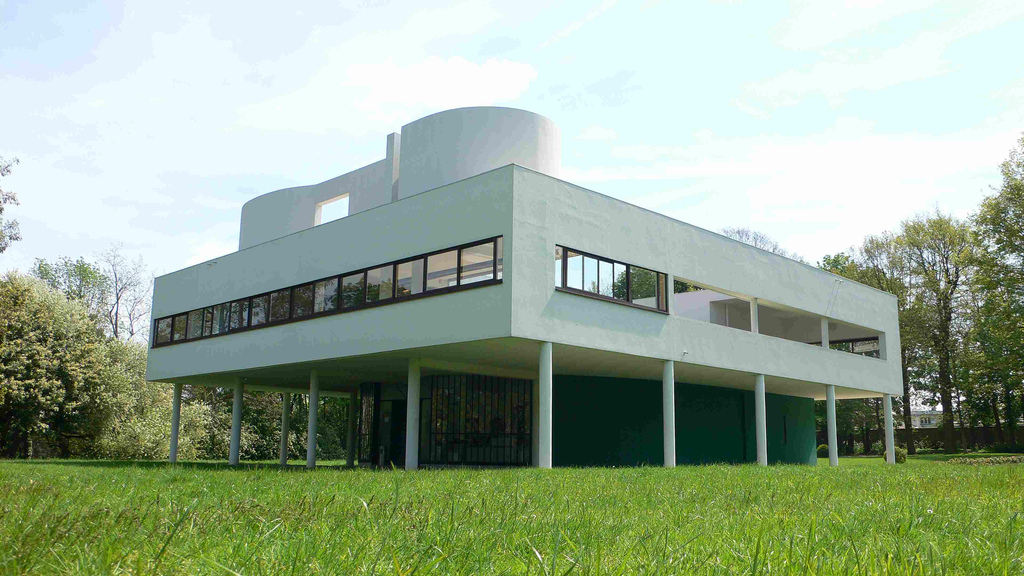I materiali dell'Architettura: Il Calcestruzzo - Quarta Parte// Materials of Architecture: The concrete - Fourth Part [ITA - ENG]

CCO Creative Commons Pantheon, Roma

Ciao amici lettori,
innanzitutto spero abbiate trascorso una buona Pasqua e Pasquetta! Che ho fatto io? Beh, la Pasqua l’ho passata in famiglia e la pasquetta…a letto! Beh, fortunatamente non tutto il giorno, ma per quasi tutta la mattina ho preferito starmene a letto perché non stavo un granchè bene: raffreddore, brividi debolezza, insomma i classici sintomi influenzali!
Oggi sto un pochino meglio e quindi sono pronto a parlarvi ancora di architettura, di materiali da costruzione e, nella fattispecie, proseguire il cammino evolutivo del calcestruzzo. Ci siamo salutati, prima delle vacanze per così dire, con il preludio alla rinascita di questo straordinario materiale grazie ad una rinnovata passione e sperimentazione protrattasi per tutto il Settecento.
Oggi scopriamo insieme come proseguirono e a cosa portarono queste sperimentazioni, che hanno permesso al calcestruzzo di evolversi in qualcosa d’altro, un materiale nuovo e dalle importanti qualità prestazionali… ma andiamo a scoprirlo nelle prossime righe!

IL CALCESTRUZZO DELL’ETA’ MODERNA E CONTEMPORANEA
- La “scoperta” del calcestruzzo armato
Come abbiamo visto precedentemente, le sperimentazioni dell’inglese John Smeaton in merito alle tecniche costruttive del calcestruzzo, portarono molti a proseguire tali sperimentazioni ed un importante punto di svolta si ebbe con l’imprenditore Joseph Aspdin il quale brevettò il Cemento Portland, ottenuto dosando in maniera opportuna i suoi componenti.
Gli studi su questo materiale non si arrestarono e infatti, nella prima metà dell’800, anche grazie ad una pubblicazione in merito, si fa largo l’idea di collegare in qualche modo un altro materiale, il ferro, al calcestruzzo, sopperendo così ai problemi di resistenza a trazione, punto debole del calcestruzzo.
Cominciarono così a sorgere le prime opere realizzate con questa nuova tecnica costruttiva che non si limitò al settore dell’edilizia. Ricordiamo, ad esempio, una copertura per una terrazza realizzata da Francois Coignet, o delle cassette per fiori realizzate con reti metalliche da Joseph Monier, o ancora, una piccola imbarcazione in ferro e calcestruzzo realizzata da J.L. Lambot e presentata, suscitando grande curiosità da parte del pubblico, alla Esposizione Universale di Parigi del 1855.
Furono proprio gli esperimenti del giardiniere Joseph Monier, al quale infatti generalmente si associa la scoperta di questo nuovo materiale, che portarono seppur in modo casuale alla scoperta delle gabbie metalliche che caratterizzano il calcestruzzo armato. Il fortunato giardiniere, impegnato nella realizzazione delle sopracitate cassette per fiori, notò che la gabbia metallica inglobata nel calcestruzzo non si staccava facilmente da esso e questo lo fece rifletter sulla potenziale efficacia di impiegare insieme questi due materiali.
Ma la scoperta di Monier va ben oltre le cassette per fiori, egli infatti comincia ad espandere l’applicazione della sua tecnica costruttiva al mondo delle costruzioni realizzando tubazioni, scale, travi, coperture, ponti e così via. Grazie alle importanti innovazioni scoperte da Monier, si susseguirono per tutto il secolo diverse altre testimonianza volte a perfezionare sempre più questa nuova tecnica costruttiva. Citiamo, per fare un esempio, il primo monumento interamente realizzato in cemento armato, ovvero la Chiesa di San Jean de Montmartre progettata da Anatole de Baudot e risalente alla fine dell’800.

CCO Creative Commons Chiesa di San Jean de Montmartre, Anatole deBaudot
Un contributo importante nell’affermazione del nuovo sistema costruttivo è arrivato dalle esperienze dell'ing. Wayss e del prof. Bauschinger di Monaco, i quali fissano i principi fondamentali del sistema, ossia l'aderenza acciaio-calcestruzzo, che impone ai due materiali di agire staticamente assieme, ed il posizionamento delle armature, che ricade in prossimità del lembo teso.
Le esperienze di queste due illustri personalità e i brevetti di Monier sancirono l’importanza di questa nuova eccezionale tecnica costruttiva e portarono a pubblicazioni, ricerche e anche alle prime normative industriali in materia. Il passo successivo fu di cominciare a ragionare anche sulla precompressione del cemento armato, che trova la sua affermazione nel XX secolo a partire dal brevetto depositato nel 1928 da Eugene Freyssinet, cui fecero seguito altri importanti contributi di diversi ricercatori.
- La diffusione e il rinnovamento nel XX secolo
Nel Novecento, il cemento armato costituì senza dubbio il materiale innovativo per eccellenza, al punto da ritenerlo in grado di resistere alle più forti e imprevedibili sollecitazioni come i terremoti, insomma lo si considerava come un materiale destinato ad essere eterno.
Furono diversi i brevetti e i trattati a cavallo trai due secoli in merito all’impiego del calcestruzzo armato, come il ponte ad arco, oggetto del brevetto Monier, desritto in un trattato dei primi del 900, caratterizzato da una doppia armatura metallica, o il cosiddetto siderocemento oggetto del brevetto Melan di fine XIX secolo, o ancora, il famoso brevetto Hennebique, in merito ai metodi di calcolo, dimensionamento e verifica della struttura.
Uno dei principali maestri del 900 in materia di calcestruzzo arato è certamente Auguste Perret, che cercò di integrare struttura ed estetica. Peculiarità di Perret fu anche l’abbattimento dei costi. La sua più celebre opera è la Casa in Rue Franklin a Parigi. Altra figura importante è lo svizzero Robert Maillart con la sua rivoluzionaria concezione strutturale del pilastro a fungo.

CCO Creative Commons Casa in Rue Franklin, Parigi, August Perret
In Italia l’impiego del calcestruzzo comincia nei primi anni del XX secolo con la realizzazione dei primi ponti ferroviari. Da buon italiano non posso non citare il terremoto di Messina del 1908, che mise in evidenza la resistenza alle azioni sismiche da parte delle opere in calcestruzzo armato. Ma l’opera che permise di detenere per anni il primato, con i suoi 100 metri di lunghezza, per l’arco in calcestruzzo armato con la luce più grande al mondo fu il Ponte Risorgimento a Roma, realizzato dall’impresa italiana Porcheddu. La tecnologia si espanse in breve tempo in tutta Europa e diversi furono gli studi fatti sull’argomento.
Un importante contributo italiano alla storia del calcestruzzo lo dobbiamo a Pierluigi Nervi, che, fra l’altro, introduce i principi di prefabbricazione strutturale. A dare grande lustro a questo ormai consolidato nuovo materiale da costruzione sono tanti altri nomi di spicco come Frank Lloyd Wright e Le Corbusier, il quale conferisce senza dubbio un nuovo linguaggio in materia strutturale ed estetica al mondo dell’architettura, e lo fa con I Cinque punti della nuova architettura scritto nel 1926, sintesi delle sue ricerche strutturali e proporzionali sul linguaggio e l’estetica del cemento armato.
Nello specifico, i cinque punti dell’architettura di Le Corbusier sono:
-pilotis, cioè un sistema di pilatri che permette alla casa di “ergersi” dal suolo ed essere retta da queste strutture;
-tetto-giardino, ovvero l’innovazione del tetto incavato e non più spiovente, così da raccogliere le acque al proprio interno, col fine di mantenere una certa umidità che trasforma le coperture in giardini terrazze grazie a fiori, alberi e prato;
-pianta libera, ossia la liberazione dalla “schiavitù” delle murature portanti che, fino a quel momento, avevano “obbligato” le piante dei vari livelli delle strutture. Questa rivoluzione comporta assoluta libertà anche in termini di economia e spazio;
-finestra in lunghezza, che si riferisce alla rivoluzionaria capacità del calcestruzzo armato che consente di realizzare finestre che possono tranquillamente correre da un bordo all’altro della facciata;
-facciata libera, resa tale grazie all’arretratezza dei pilastri verso l’interno della casa che lasciano proseguire il solaio in falso verso l’esterno, rendendo dunque la facciata libera da vincoli per le bucature.
Un esempio emblematico di applicazione, da parte di Le Corbusier, di questi cinque punti è certamente la Ville Savoye a Poissy, del 1929, una delle sue più celebri opere. Con il suo nuovo linguaggio, Le Corbusier non solo rompe lo schema della “scatola muraria” come struttura portante togliendogli il ruolo di protagonista dell’architettura, ma pone le basi verso un nuovo sistema costruttivo: la struttura intelaiata.
Pian piano il cemento armato comincia, però, a perdere il suo fascino e la sua forza perché si cominciano a vedere i segni del tempo sulle strutture ponendo per la prima volta la preoccupante questione sul problema dell’invecchiamento di questo materiale, che spinge i ricercatori de tempo a concentrarsi sul restauro e la conservazione del cemento armato.

Bene amici, ho provato ad essere sintetico ma mi sa che non ce l’ho fatta! Spero di essere stato esaustivo e leggero, e che abbiate gradito quanto vi ho proposto. Arrivati a questo punto non mi rimane che congedarmi e darvi appuntamento ai prossimi articoli, vi abbraccio tutti!
L'Ego dice: "Quando ogni cosa andrà a posto troverò la pace".
Lo Spirito dice: "Trova la pace e ogni cosa andrà a posto".

CCO Creative Commons Ville Savoye, Poissy, Le Corbusier

Hello reader friends,
first of all I hope you have spent a Happy Easter and Easter! What did I do? Well, I spent Easter with my family and Easter Monday ... in bed! Well, fortunately not all day, but for most of the morning I preferred to stay in bed because I was not very good: cold, shivering weakness, in short, the classic flu symptoms!
Today I'm a little better and therefore I'm ready to talk to you again about architecture, building materials and, in this case, continue the evolutionary journey of concrete. We said goodbye, before the holidays so to speak, with the prelude to the rebirth of this extraordinary material thanks to a renewed passion and experimentation that lasted throughout the eighteenth century.
Today we discover together how they continued and what led these experiments, which allowed the concrete to evolve into something else, a new material with important performance qualities... but let's find out in the next few lines!

THE CONCRETE OF MODERN AND CONTEMPORARY AGE
- The "discovery" of reinforced concrete
As we have seen previously, the experiments of the Englishman John Smeaton on the concrete construction techniques, led many to continue these experiments and an important turning point came with the entrepreneur Joseph Aspdin who patented the Portland cement, obtained by suitably dosing its components.
The studies on this material did not stop and in fact, in the first half of the 800, thanks to a publication on this, the idea of connecting some other material, the iron to concrete, thus overcoming the problems of tensile strength, weak point of the concrete.
Thus began the first works created with this new construction technique that was not limited to the building sector. Recall, for example, a cover for a terrace created by Francois Coignet, or of the flower boxes made of metal meshes by Joseph Monier, or even a small boat made of iron and concrete created by JL Lambot and presented, arousing great curiosity on the part of the public, at the Universal Exhibition in Paris in 1855.
It was precisely the experiments of the gardener Joseph Monier, who is generally associated with the discovery of this new material, which led to the discovery of the metal cages that characterize the reinforced concrete, albeit in a casual way. The lucky gardener, engaged in the realization of the above mentioned flower boxes, noticed that the metal cage incorporated in the concrete did not easily detach from it and this made him reflect on the potential effectiveness of using these two materials together.
But the discovery of Monier goes well beyond the flower boxes, in fact he begins to expand the application of his construction technique to the world of construction by making pipes, stairs, beams, roofs, bridges and so on. Thanks to the important innovations discovered by Monier, various other testimonies aimed at further refining this new construction technique followed one another throughout the century. For example, we mention the first monument built entirely of reinforced concrete, or the Church of San Jean de Montmartre designed by Anatole de Baudot and dating back to the end of the nineteenth century.
An important contribution in the affirmation of the new constructive system came from the experiences of Eng. Wayss and of the prof. Bauschinger of Monaco, who fix the fundamental principles of the system, namely the steel-concrete adherence, which requires the two materials to act statically together, and the placement of the reinforcements, which falls near the stretched edge.
The experiences of these two illustrious personalities and the Monier patents sanctioned the importance of this new exceptional construction technique and led to publications, research and even the first industrial regulations on the subject. The next step was to begin to think about the precompression of reinforced concrete, which finds its affirmation in the twentieth century starting from the patent filed in 1928 by Eugene Freyssinet, which was followed by others important contributions from different researchers.
- Dissemination and renewal in the 20th century
In the twentieth century, reinforced concrete was undoubtedly the innovative material par excellence, to the extent that it was able to withstand the strongest and most unpredictable stresses such as earthquakes, in short, it was considered a material destined to be eternal.
The patents and treaties between the two centuries were different with regard to the use of reinforced concrete, such as the arched bridge, object of the Monier patent, described in a treatise of the early 1900s, characterized by a double metal reinforcement, or the so-called siderocemento object of the Melan patent of the late nineteenth century, or even the famous Hennebique patent, with regard to the calculation, sizing and verification methods of the structure.
One of the main masters of the 20th century in the field of plowed concrete is certainly Auguste Perret, who tried to integrate structure and aesthetics. Peculiarities of Perret was also the reduction of costs. His most famous work is the House on Rue Franklin in Paris. Another important figure is the Swiss Robert Maillart with his revolutionary structural conception of the mushroom pillar.
In Italy the use of concrete began in the early twentieth century with the construction of the first railway bridges. As a good Italian I can not but mention the Messina earthquake of 1908, which highlighted the resistance to seismic actions by reinforced concrete works. But the work that allowed for years to hold the record, with its 100 meters in length, for the reinforced concrete arch with the largest light in the world was the Ponte Risorgimento in Rome, realized by Italian company Porcheddu. The technology expanded rapidly throughout Europe and several studies were done on the subject.
An important Italian contribution to the history of concrete we owe to Pierluigi Nervi, who, among other things, introduces the principles of structural prefabrication. To give great prestige to this now consolidated new building material are many other prominent names such as Frank Lloyd Wright and Le Corbusier, which undoubtedly confers a new language in structural matter and aesthetics to the world of architecture, and it does so with The Five points of the new architecture written in 1926, synthesis of its structural and proportional research on the language and aesthetics of reinforced concrete.
Specifically, the five points of Le Corbusier's architecture are:
-pilotis, ie a system of pilatri which allows the house to "rise" from the ground and be supported by these structures;
-roof-garden, or the innovation of the sunken roof and no longer sloping, so as to collect the water inside, in order to maintain a certain humidity that transforms the roofs into terraces gardens thanks to flowers, trees and lawn;
-free plant, that is the liberation from the "slavery" of the load-bearing walls that, until that moment, had "forced" the plants of the various levels of the structures. This revolution implies absolute freedom also in terms of economy and space;
-window in length, which refers to the revolutionary capacity of reinforced concrete, which allows windows to be made that can easily run from one edge of the façade to the other;
-free facade, made such thanks to the backwardness of the pillars towards the inside of the house that let the false floor continue towards the outside, thus making the facade free from ties for the holes.
An emblematic example of Le Corbusier's application of these five points is certainly the Ville Savoye in Poissy, of 1929, one of his most famous works. With its new language, Le Corbusier not only breaks the scheme of the "wall box" as a supporting structure, taking away the role of protagonist of architecture, but lays the foundations for a new constructive system: the framed structure.
Slowly the reinforced concrete begins, however, to lose its charm and its strength because you begin to see the signs of time on the structures by placing for the first time the troubling issue on the problem of aging of this material, which pushes the researchers de time to concentrate on the restoration and conservation of reinforced concrete.

Well friends, I tried to be synthetic but I know that I did not! I hope I have been exhaustive and light, and that you have enjoyed what I have proposed to you. At this point I can only take leave and give you an appointment to the next articles, I embrace you all!
The ego says: "When everything goes right I will find peace"
The Spirit says: "Find peace and everything will fall into place"
CCO Creative Commons Ponte Risorgimento,Roma
Ciao, se riesci a mettere le fonti nel tuo post posso farlo votare da steemstem
Ciao, certamente! A partire dal prossimo articolo citerò anche le fonti! Grazie!